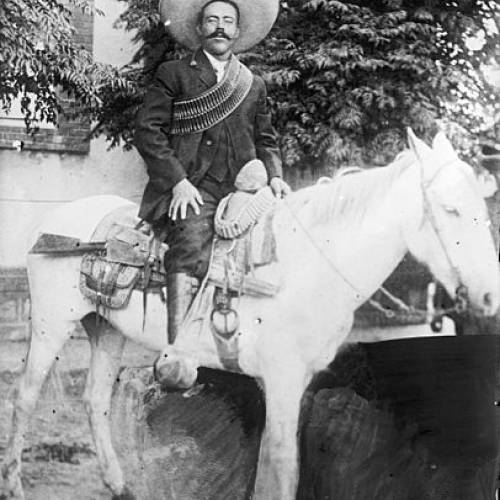 https://heaven.world/en/pancho-villa
https://heaven.world/en/pancho-villa
Firstname
Pancho
Lastname
Villa
Name
Pancho Villa
lived from:
1878-00-00
lived until:
1923-07-20
Francisco "Pancho" Villa was a Mexican Revolutionary general and one of the most prominent figures of the Mexican Revolution.
As commander of the División del Norte in the Constitutionalist Army, he was a military-landowner of the northern Mexican state of Chihuahua. Given the area's size and mineral wealth, it provided him with extensive resources. Villa was also provisional Governor of Chihuahua in 1913 and 1914. Villa can be credited with decisive military victories leading to the ousting of Victoriano Huerta from the presidency in July 1914. Villa then fought his erstwhile leader in the coalition against Huerta, "First Chief" of the Constitutionalists Venustiano Carranza. Villa was in alliance with southern revolutionary Emiliano Zapata, who remained fighting in his own region of Morelos. The two revolutionary generals briefly came together to take Mexico City after Carranza's forces retreated from it. Later, Villa's heretofore undefeated División del Norte engaged the military forces of Carranza under Carrancista general Álvaro Obregón and was defeated in the 1915 Battle of Celaya. Villa was again defeated by Carranza, 1 November 1915, at the Second Battle of Agua Prieta 1 November 1915, after which Villa's army collapsed as a significant military force.
Villa subsequently led a raid against the U.S.-Mexican border town in the Battle of Columbus 9 March 1916. The U.S. government sent U.S. Army General John J. Pershing to capture Villa in an unsuccessful nine-month incursion into Mexican sovereign territory that ended when the United States entered World War I and Pershing was recalled.
In 1920, Villa made an agreement with the Mexican government, following the ousting and death of Carranza, to retire from hostilities and was given an hacienda near Parral, Chihuahua, which he turned into a "military colony" for his former soldiers. In 1923, as presidential elections approached, he re-involved himself in Mexican politics. Shortly thereafter he was assassinated, most likely on the orders of Obregón.
In life, Villa helped fashion his own image as an internationally known revolutionary hero, starring as himself in Hollywood films and giving interviews to foreign journalists, most notably John Reed.
After his death, he was excluded from the pantheon of revolutionary heroes until the Sonoran generals Obregón and Calles, whom he battled during the Revolution, were gone from the political stage. Villa's exclusion from the official narrative of the Revolution might have contributed to his continued posthumous popular acclaim. He was celebrated during the Revolution and long afterward by corridos, movies about his life, and novels by prominent writers. In 1976, his remains were reburied in the Monument to the Revolution in Mexico City in a huge public ceremony not attended by his widow Luz Corral.
Hidalgo del Parral (Chih.), Mexico
https://en.wikipedia.org/wiki/Pancho_Villa